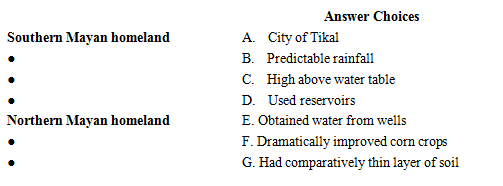托福阅读常考话题及练习题推荐一:玛雅文明(3)
1 托福阅读常考话题:玛雅文明
Paragraph 4: How did those dense southern Maya populations deal with the resulting water problem? It initially surprises us that many of their cities were not built next to the rivers but instead on high terrain in rolling uplands. The explanation is that the Maya excavated depressions, or modified natural depressions, and then plugged up leaks in the karst by plastering the bottoms of the depressions in order to create reservoirs, which collected rain from large plastered catchment basins and stored it for use in the dry season. For example, reservoirs at the Maya city of Tikal held enough water to meet the drinking water needs of about 10,000 people for a period of 18 months. At the city of Coba the Maya built dikes around a lake in order to raise its level and make their water supply more reliable. But the inhabitants of Tikal and other cities dependent on reservoirs for drinking water would still have been in deep trouble if 18 months passed without rain in a prolonged drought. A shorter drought in which they exhausted their stored food supplies might already have gotten them in deep trouble, because growing crops required rain rather than reservoirs.
8 Which of the sentences below best expresses the essential information in the highlighted sentence in the passage? Incorrect choices change the meaning in important ways or leave out essential information.
A. Southern Maya populations obtained the water they needed for the dry season by collecting and storing rainwater in sealed depressions.
B. The Maya are credited with creating methods for modifying natural rainwater and storing it.
C. Leaks in the karst caused difficulties in the creation of reservoirs, which were needed to store water for the dry season.
D. Southern Mayans were more successful at collecting rain than storing it during dry seasons.
9.What can be inferred from paragraph 4 about how residents of Tikal met their needs for water and food during most periods of drought?
A. They depended upon water and food that had been stored for use during the dry season.
B. They obtained drinking water and water for crop irrigation from Coba dikes.
C. They located their population centers near a lake where water was available for drinking and watering crops.
D. They moved locations every 18 months to find new croplands and water sources.
10. The word "prolonged" in the passage is closest in meaning to
A. unusual
B. unexpected
C. extended
D. disastrous
11. The word "exhausted" in the passage is closest in meaning to
A. used up
B. reduced
C. wasted
D. relied upon
Paragraph 1: To understand the ancient Mayan people who lived in the area that is today southern Mexico and Central America and the ecological difficulties they faced, one must first consider their environment, which we think of as "jungle" or "tropical rainforest." [A] This view is inaccurate, and the reason proves to be important. [B]Properly speaking, tropical rainforests grow in high-rainfall equatorial areas that remain wet or humid all year round. But the Maya homeland lies more than sixteen hundred kilometers from the equator, at latitudes 17 to 22 degrees north, in a habitat termed a "seasonal tropical forest." [C]That is, while there does tend to be a rainy season from May to October, there is also a dry season from January through April. If one focuses on the wet months, one calls the Maya homeland a "seasonal tropical forest"; if one focuses on the dry months, one could instead describe it as a "seasonal desert." [D]
12. Look at the four squares [■] that indicate where the following sentence could be added to the passage.
The difference between the two climates challenged the Maya who had to deal with both.
Where would the sentence best fit?
13.Directions: Select from the seven phrases below the phrases that correctly characterize the southern Mayan homeland and the phrases that correctly characterize the northern Mayan homeland. Drag each phrase you select into the appropriate column of the table. Two of the phrases will NOT be used. This question is worth 3 points.









